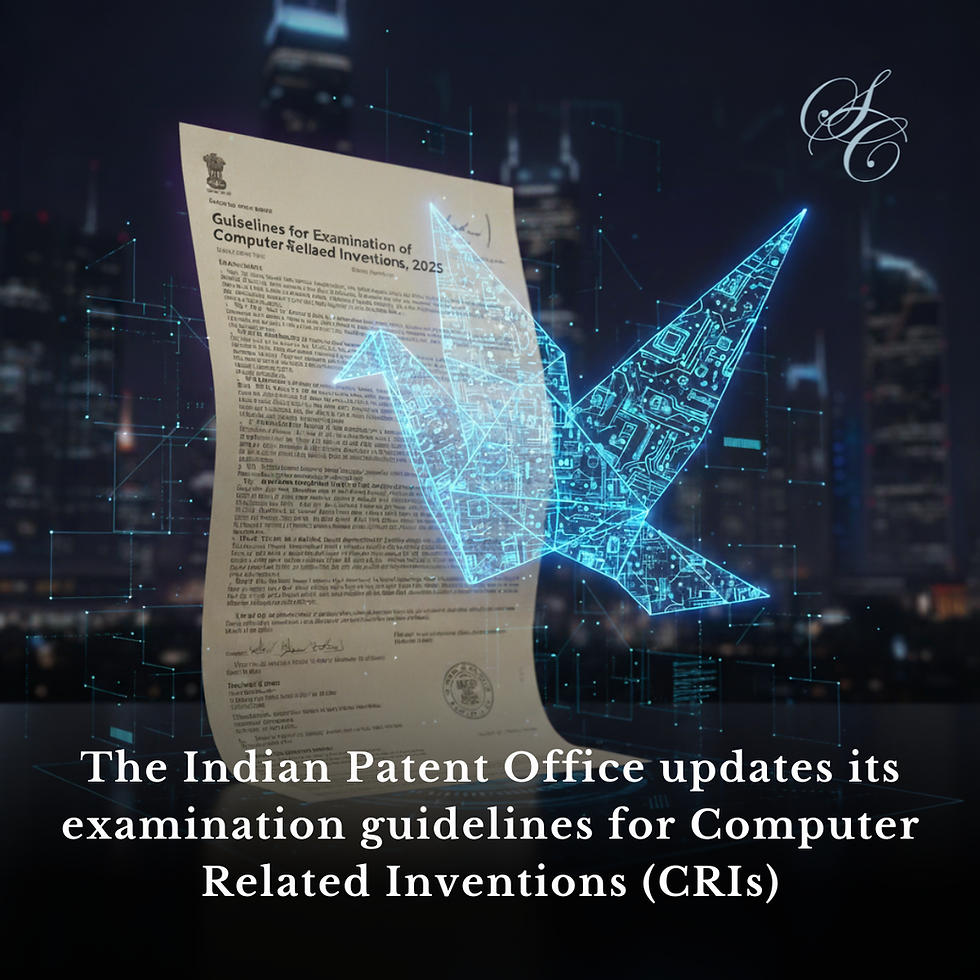A DIGITAL SYSTEM
- Sarwajeet Singh
- May 14, 2018
- 5 min read
For long, India suffered from an Intellectual Property office mired in inefficiency and inordinate delays in prosecution of trademarks with right holders having to wait for close to seven (7) to eight (8) years for a registration. The problems on the post registration recordals and oppositions was in dire straits as well with oppositions taking close to ten (10) years to get cleared in some cases and post registration recordals taking forever to get recorded.
On March 6, 2017, with much fanfare, the government introduced the new Trade Marks Rules 2017 (“Rules”) bringing a host of changes which were welcomed. Scepticism still reigned as to how the implementation of these new rules would be like. One year on, lets examine the effect these new rules and an improved IT infrastructure have had on each step of the prosecution process.
APPLICATION
With the advent of digital platform to file trademark applications, and the difference in fee between a filing made online and one made at the counter at the Trade Marks Registry (“Registry”) (a 10% rebate in filing online), more practitioners started filing trademark applications online. As per the recently released annual report 2016-17, online filings have gone up 80% from prior years.
However, the new rules dictated that applicants who were filing applications claiming use, file an affidavit with evidence of such use. Though this seems to have been done to ensure that applicants do not misrepresent dates of use to claim an advantage in a contentious proceeding, this has proved to be a challenge to numerous applicants as they are unable to find evidence dating back a few decades. Thus, a relaxation of this rule and a look at it on a case to case basis is the need to the hour. Alternatively, the Registry could look into the acceptance of the affidavit in the absence of evidence for such matters as well.
EXAMIANTION
Once the application is filed, a preliminary check is done to ensure that documents such as the affidavit of use (if the application has been filed claiming a date of use), the Power of Attorney, priority documentation etc have been filed is done. In the absence of such documents, the Registry issues an official communication by email instructing the applicant to file the missing documents within thirty days (30) of the issuance of such official communication. In the absence of filing the required documentation, the Registry will proceed to abandon the application. Though the preliminary checks are a good step to ensure that the rules are complied with, the Paris Convention regarding the time period of two (2) months for the submission of priority documentation from the date of filing the application is overruled with issuance of such an official communication. Further streamlining of this process is required.
Pendency at the examination stage in the prosecution process was a major problem. At times, it used to take close to fourteen (14) months for such examination to take place. With the new rules and the new digital platform, such examination is taking place within a time period of one (1) month. Over five lakh applications have been examined in 2016-17 which is a substantial increase over the two lakh which were examined in the year 2015-16. Procedural reforms in examination has resulted in increase in the acceptance of applications for publication from 10% to 40%. Digitization has indeed helped in speedier examination of a trademark application.
PUBLICATION, OPPOSITION
Weekly e-publication of the Trade Marks Journal (“Journal”) has been the norm for the last few years. However, with the increase in acceptance of trademark applications, the journal has become extensive, going up to close to 10,000 pages per week. The number of increase in publications is directly related to the number of applications being accepted at the examination stage which reflects better examination procedures on part of the Registry. This is a welcome step in the right direction which replaces a system where nearly all applications filed used to face objections, some being ludicrous as well.
The new rules have also changed the time period of filing an opposition to four (4) months from the prior three (3) months. Furthermore, no person wishing to initiate an opposition proceeding can seek an extension of time. Extensions of time at the evidentiary stage etc have also been removed. The removal of extensions of time have been brought in to reduce undue delay in the opposition proceedings. Oppositions, counterstatements and now evidence can be filed online through the digital portal. This is a good step to aid in faster service of documents to speed up the opposition proceedings. Over the last few months, this step has been effective in bringing down the time of oppositions.
Additionally, the Registry has commenced service of oppositions and counterstatements and orders online as well. This system is still in its nascent stages with more work having to be done in acquiring the e-mail ids of applicants an/or their attorneys. Currently, practitioners are facing a system where service of order and/or scheduled hearings are happening to the wrong email id or to a prior attorney. The Trade Mark Registry has been notified of this and they have requested practitioners for more time to correct such problems.
REGISTRATIONS
The issuance of Certificates of Registration has been fully automated. This replaces the system of sending the Certificate of Registration by post. Furthermore, only e-Certificates are issued. This has helped bring down the time for the issuance of Certificates of Registration. The annual report 2016-17 states that the number of registrations have increased 284.5% from the previous year. This is a phenomenal increase by any standards.
RENEWALS
Renewal requests can now be filed one (1) year prior to the date of renewal as per the new Rules. This replaces the time period of six (6) months prior to the date of renewal under the old Rules. Having filed renewals one (1) year prior to the date of renewal, we can safely state that the renewals are processed within a week or two and the details in the Registry’s online records are updated. The intimation of renewal is sent by email to notify us that the renewal has been completed. This is a great improvement from a system where it took a year or more for the renewals to be completed. However, we did find that such a speedy processing of renewal only happened in matters where there was no discrepancy as to the record owner.
POST REGISTRATION REQUESTS
Post registration requests have for long been the ones where the Registry has taken a back seat. Registrants have had to wait for close to five years and more for recordals to be processed. One may recall that the Registry conducted en-masse hearings four years ago in an attempt to clear the backlog. Currently, we have found that the post registration recordals are happening at a faster time period. Simple recordals are taking place within six to eight months. However, more work is required to be done to ensure that the time period taken for processing these recordals are brought down.
Several initiatives have been taken to upgrade the IT infrastructure and to digitize the work flow by the Registry. Furthermore, additional man power, which has long been lacking, has been added as well. Though not perfect, as the system is still in a nascent stage, it can be safely said that the Registry is on the right path and that a lot of work is being done to ensure timely processing and satisfactory delivery of service by the Indian Trade Marks Registry.




Comments